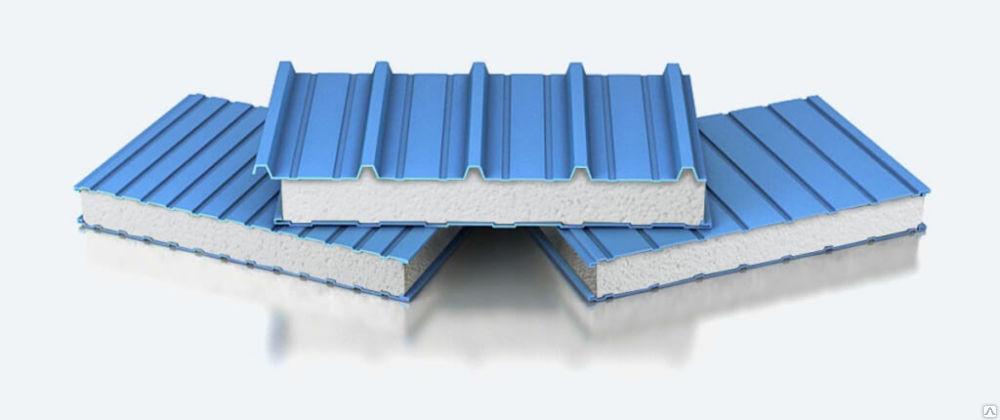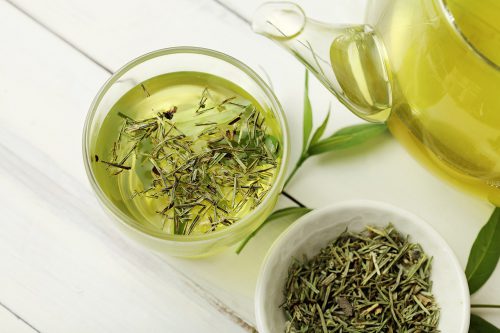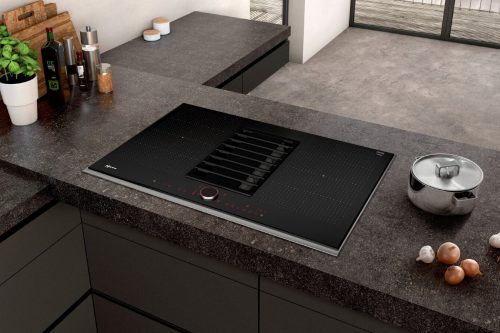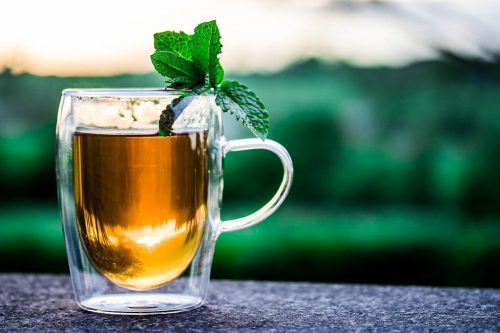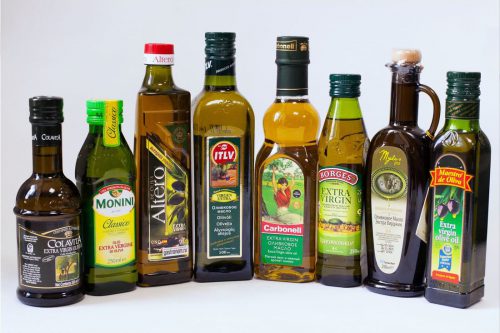Slate is one of the most popular materials for roofing. Many people mistakenly believe that slate is asbestos corrugated sheets. In fact, manufacturers offer slate in a variety of shapes and materials. Roofing sheets can be based on metal, rubber, natural slate and other elements. It is quite difficult to choose the right roofing material, because it is easy to get confused in the variety of models on the market.
We have collected basic tips on how to choose slate for the roof, and have compiled a rating that includes the TOP of the best models from renowned manufacturers. The best slate in 2020 is divided into two categories: corrugated sheets and flat sheets. Their differences will be discussed below.
What is slate
The word "slate" comes from the German language and means "slate". This name stuck due to the fact that in Germany for some time the roof was made from natural slate. This material is quite expensive, fragile and heavy, so it is rarely used today. However, 100-200 years ago, it could be found on the roofs of many houses of wealthy citizens.
The designation quickly spread throughout Europe, and then to more distant countries on other continents. Today, the word "slate" is understood as almost any sheet material intended for roofing. Moreover, this means not only wavy material, which differs in height difference, but also flat elements that are intended to create partitions.
Although initially only slate products were understood as slate, now this category includes elements made of polymers, rubber, bitumen, plastic, and metal. Each material has its own positive and negative properties.
The main types of slate
Now on the market most often there are sheets of asbestos slate or euro slate. Metal and plastic products are also popular. Others did not find enough applications in demand in Russia, but are in demand in European countries.
Flat
Flat slate is used not only for roofing. It can be used to create fences and partitions. Due to the absence of waves, the sheets are easier to fix, they are easily processed. On the other hand, the absence of relief reduces the strength of the building element, which makes it impossible to use it in structures with high loads.
Flat slate can be used for roofing, but only in more southern areas. Due to poor drainage and low mechanical strength, it cannot be used where heavy snowfall is possible. Flat material easily cracks and collapses under the influence of packed snow. This can lead not only to unnecessary expenses, but also serious injury to residents.
Wavy
The wavy variation is much more popular. It is perfect for both southern and northern regions, where in winter there is a high risk of collapse under the influence of layers of snow.The relief allows you to achieve good drainage performance, so the sheets show themselves perfectly even during heavy rainfall.
It is important to note that the strength and thickness of a sheet with a relief depends on the number of waves in one building element. The following variations are distinguished:
- With 5 waves. This is the minimum allowable number of waves in one sheet. Due to the weak relief, such a building element is not strong enough, therefore it is not popular. Such cheap slate can be used to create the roof of light buildings, for example, gazebos, but it is not recommended for houses.
- With 6 waves. At the moment, it is the second most popular type of slate not only in Russia, but also in the European Union. It is distinguished by good strength indicators and at the same time is the thickest of all - the average layer thickness is 7.5 mm. Due to this, 6-wave slate is distinguished by high rates of sound insulation and thermal insulation, and is in demand in the northern regions. It is only slightly inferior in service life to slate with 7 waves.
- With 7 waves. Differs in the highest indicators of strength to mechanical damage and pressure, therefore it takes the deserved first place among analogues with a different number of waves. The 7-wave roofing sheet reaches 5.8 mm in thickness, perfectly drains water, withstands prolonged exposure to snow, even with ice.
- With 8 waves. This type is not popular, and neither is the 5-wave product. This is explained by the fact that 8 waves at once lead to a serious increase in leaf weight. Few foundational structures with well-made ceilings will be able to withstand this weight for long.
Which slate is better for the owner to decide. It is necessary to choose a product based on the construction goals. In the southern regions, 5-wave slate is quite suitable for decorative buildings. If you want to create a family nest that will last at least 50 years, then a good foundation must be supplemented with a solid 7-wave slate.
Shale
The division of slate by material should now be mentioned. Slate slate is the only natural option. The stone is mined in mines, processed, polished, and then used in the construction of the roof. Obviously, this material is very expensive, so owners of large country houses with a large budget reserve prefer to use it.
Oil shale benefits:
- resistance to fire;
- excellent sound insulation;
- thermal insulation;
- environmental friendliness, safety even if there are children and allergy sufferers in the house;
- spectacular appearance.
At the same time, there are a number of disadvantages. Natural slate cannot be painted, so the roof will always be gray or bluish gray. The material is very heavy, weak floors will collapse under its weight. Finally, the high price tag makes it unaffordable for many buyers.
Asbestos
Asbestos was especially popular in the last century. This is a relatively inexpensive type of slate, fragile, but easy to use. In Europe, this material is now not used, as experts started talking about the carcinogenic properties of asbestos. When heated, it can give off fumes that can lead to the development of cancer cells. However, Russian consumers need not worry: asbestos slate is only dangerous in Europe. In Russia, chrysolite-asbestos is used to create roofing material, in Europe - ampheol-asbestos. It is the second that is distinguished by its dangerous properties. The differences between Russian and European slate are based on the fact that asbestos is mined in different deposits. Domestic ones are completely safe.
Due to the special type of production, asbestos sheets have a lot of positive properties. During the manufacture, a cement mortar is used, which is additionally reinforced with chrysolite-asbestos. This compound turns out to be hydrophobic, UV resistant and durable.
Advantages of asbestos sheets:
- resistance to fire;
- it shows itself well in frost and heat, does not shrink or expand under the influence of temperature;
- it is highly durable when exposed to pressure;
- low thermal conductivity, the material retains heat for a long time;
- simple installation of the material.
Despite a number of positive qualities, now asbestos slate, like shale, is gradually receding into the background. It is replaced by euro slate. The advantages of this type of material are discussed below. As for the disadvantages of the now classic asbestos, it should be mentioned:
- mechanical fragility of the material, which complicates the transportation and cutting of sheets;
- high weight.
Due to their high weight, sheets, just like slate, are not suitable for lightweight structures. The building must have a solid foundation and good lathing to withstand the pressure of such building material.
Note! The best paint for slate with the addition of asbestos is oil paint. It absorbs well and retains brightness for a long time.
Euroslate
The most popular building material at the moment for arranging the roof. Made from a mixture of bitumen and additional resins, as well as organic fibers. Such flooring is environmentally friendly, not dangerous for households, and can be painted in various attractive colors. Among the disadvantages are the high price, as well as slight expansion when exposed to high temperatures. On the other hand, this is the only type of slate that can be easily installed on roofs with complex shapes.
Rubber
Rubber is not popular as it burns easily and expands when exposed to heat. It is suitable for those who want to save money. Rubber slate can be used when arranging small outbuildings where flammable materials will not be stored.
Plastic
Plastic sheets are used to create roofs near technical buildings, as well as sheds. Popular use in the construction of roofs over swimming pools, summer gazebos, garages.
Due to its low weight, the plastic does not require a serious crate. It is resistant to damage, does not break even with a hammer, does not fade in the sun. However, the transparency of the sheets makes them unsuitable for residential construction.
TOP of the best slate models
Here are the 5 best slate models for 2020. The rating was compiled on the basis of real customer reviews who have already tested the properties of the building material in practice.
Flat products
Recall that flat slate is mainly technical, suitable for partitions and fence structures.
LPP 1500x1000x6 mm
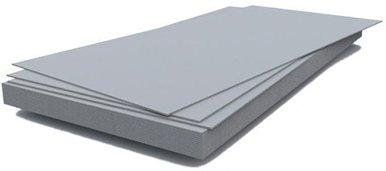
Price: from 260 rubles
The product is resistant to moisture. Even when water gets in, it will not delaminate and change its technical properties. Also, the sheet is characterized by high density and good thickness, which is 6 mm. Such building material will be very difficult to break through, it is not afraid of sudden gusts of wind and heavy precipitation with hail.
The manufacturer recommends using the model for the construction of fence structures. A sheet size of 100 by 150 cm is excellent for these purposes.
Pros:
- high density provides additional strength;
- suitable for painting with oil paint;
- not afraid of moisture;
- does not fade when exposed to ultraviolet rays;
- can withstand high pressure for a long time;
- suitable for northern regions with constant severe frosts.
Minuses:
- one rack weighs a whopping 18.5 kg;
- the layer will have to be drilled to ensure the connection with the support pillars;
- quite high price for flat slate.
LPN 1500x1000x6 mm
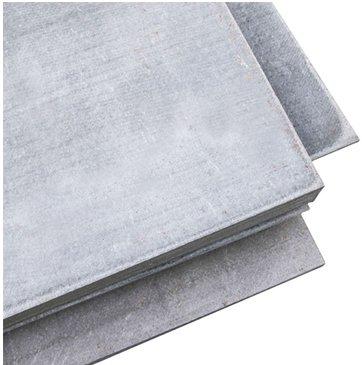
Price: from 230 rubles
This model is intended primarily for the creation of partitions in a production environment. Slate is not afraid of moisture, high and low temperatures, does not conduct electricity. It is easy and quick to install, although it requires additional holes through drilling.Buyers recommend carefully packing the sheets and using the services of only careful transport companies during transportation - during transportation, protruding parts of the formation may break off.
Pros:
- convenient when arranging partitions due to the large dimensions of each sheet;
- withstands temperature extremes and constant exposure to moisture;
- it is not an electrical conductor, therefore it is in demand in industrial premises;
- lends itself to staining with polymer paints;
- long service life;
- manufacturer's warranty;
- refractory material.
Minuses:
- not the highest strength indicator;
- corners may break off the sheet during transportation.
Best corrugated slate
This type of material is in demand when arranging the roofs of residential buildings, gazebos, outbuildings, as well as small decorative sheds.
SV-40 1125x1750x5.0 mm
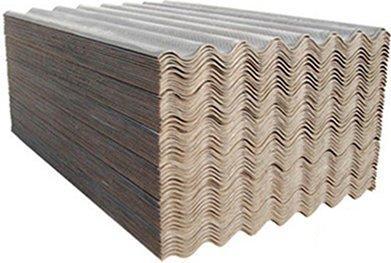
Price: from 190 rubles
The sheet is intended primarily for household needs. Due to its low price, it is used in the arrangement of buildings such as agricultural sheds and cowsheds, personal workshops, garages. There are 8 waves in one sheet at once, which determines high resistance to snow pressure. During installation, it is important to take care of the strength of the support, because one sheet weighs about 24 kg. At the same time, the dimensions of 1125x1750 mm allow additional savings on material: usually roofing layers are produced in smaller width and length.
Pros:
- good thermal insulation;
- withstands numerous roof frosts;
- quickly mounted;
- the wave step is 15 cm, which facilitates the installation of layers;
- 4 cm wave height provides additional strength;
- withstands pressure up to 16 MPa.
Minuses:
- high weight of each sheet;
- additional insulation is required if noise protection is required.
SV-40 1750x1130x5.8 mm
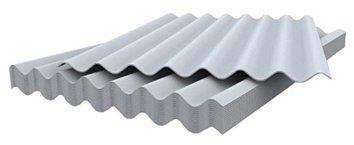
Price: from 220 rubles
This building material is popular for the arrangement of residential buildings. It has good thermal insulation properties, which allows you to keep the room warm in winter and not overheat the building in summer. The flooring is quickly installed due to the large dimensions of each element. If necessary, the owner can make additional coloring of the sheets to his taste using PF paints. The flooring is not afraid of snow, water, and is not flammable.
Pros:
- safety;
- low price;
- high strength, the material can be walked on during maintenance;
- withstands prolonged exposure to moisture;
- even caked and wet snow does not lead to the destruction of the roof;
- flat end of layers;
- easily processed into complex shapes.
Minuses:
- difficult to drill;
- heavy weight;
- looks unpresentable without additional staining.
Euro SV-40 1750x1130x5.2mm
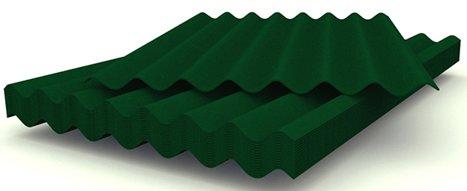
Price: from 260 rubles
This material, unlike the others, is pre-painted. The high price makes it inaccessible for the arrangement of utility rooms, but in residential construction this slate will be very useful.
Pros:
- high wave height;
- strength, you can walk on the flooring;
- there is no electrical conductivity;
- resistant to burning;
- does not lend itself to mold;
- long service life, up to 50 years;
- bends well, can be used when arranging a roof of complex shape.
Minuses:
- high price;
- not everyone will like the green hue.
Before choosing a building material, it is imperative to take into account the possibilities of roofing and floors, budget restrictions, as well as the purpose of the building. This will protect you from buying mistakes.

